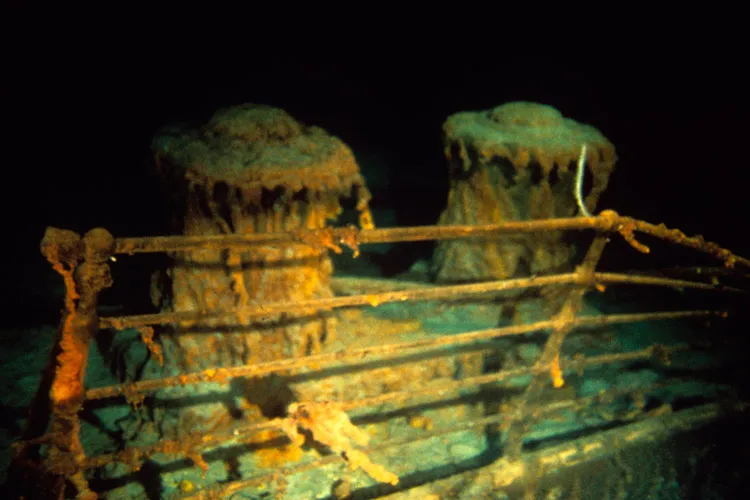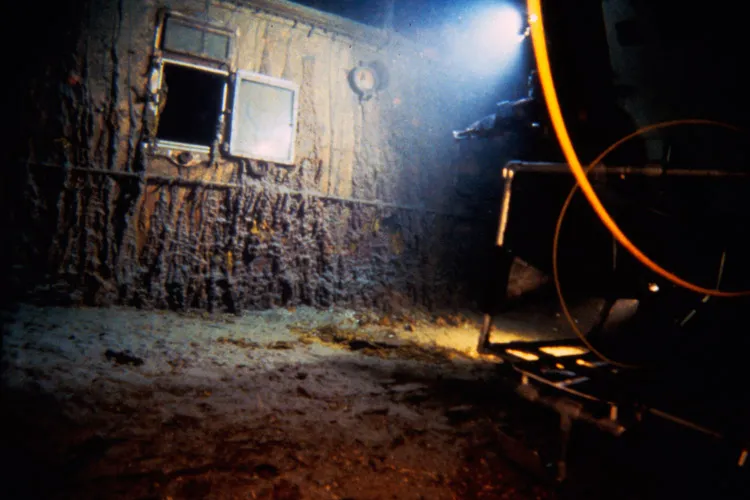The Story of the First Manned Expedition to the Sunken Wreck of the ‘Titanic’
The manned exploration in 1986 brought back the first high-quality images of the ship since it sank
/https://tf-cmsv2-smithsonianmag-media.s3.amazonaws.com/filer/ce/e7/cee73209-1d7e-43fa-ad27-89ac42192f9d/1shipbow_210955.jpeg)
A chilling sight in the frigid waters where the Titanic sunk more than 70 years before: On this day in 1986, tapes from the first manned expedition to the Titanic were publicly released.
It was the first detailed view of the Titanic since the ship went down 74 years earlier. Robert Ballard, the manned expedition's leader, had discovered the wreck on the ocean’s floor a year before using an unmanned underwater camera on a mission for the Woods Hole Oceanographic Institution, but the photos from that mission weren't very detailed. By the following year, public interest in what was down there was at a high.
Nowadays, the wreck is more familiar, as countless expeditions have visited the ship since its discovery. But in 1986, everything was new.
“The videotapes are stunning in their clarity and detail,” writes History.com, “showing one of the ship’s majestic grand staircases and a coral-covered chandelier swinging slowly in the ocean current.”
A team of three made 11 exploratory dives on a submarine, Alvin, accompanied by a robotic camera nicknamed Jason Jr. that could be piloted remotely. They were only able to send Jason out a few times, reported Walter Sullivan for The New York Times. In total, the team took more than 57,000 photographs as well as hours of video in an attempt to document the wreck.
“It’s been transformed into another ship,” Ballard said, according to the Los Angeles Times. “It has the vestiges of the Titanic, but it’s now a ship of the deep.”
Ballard said in a 2012 talk that the moment that affected him most was when Jason Jr. found a pair of shoes lying on the ocean floor. “To me, this was what set the tone for our expedition,” he said. Photographing massive ship components covered in sea life was one thing, he said. “But then when you go across the debris field, you come across these pairs of shoes.”
Each of those pairs of shoes was a person who fell to the sea floor after they drowned, he said. Small animals and the sea’s acidity made quick work of their bodies and skeletons–a process that only takes about five years. “What’s left behind are their pairs of shoes exactly as they were attached to the body,” he said.
A number of expeditions have gone to see–and take from–the Titanic’s wreck in the years since that first exploration, a fact that has troubled Ballard. “You don’t go to Gettysburg with a shovel,” Ballard said in 2012, arguing that the remains should all be left as they were. That year, after numerous artifacts had been removed from the Titanic, UNESCO declared the wreck to be a protected cultural heritage site, protecting it from future scavengers.
“We do not tolerate the plundering of cultural sites on land, and the same should be true for our sunken heritage,” UNESCO Director-General Irina Bokova said.

